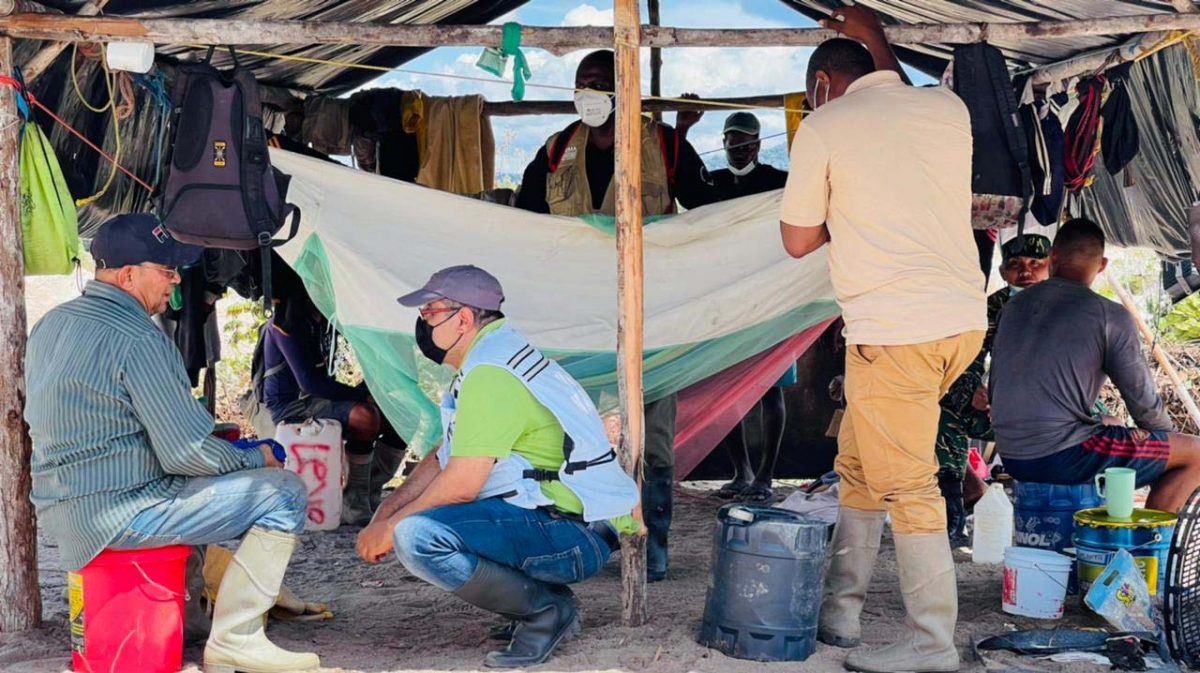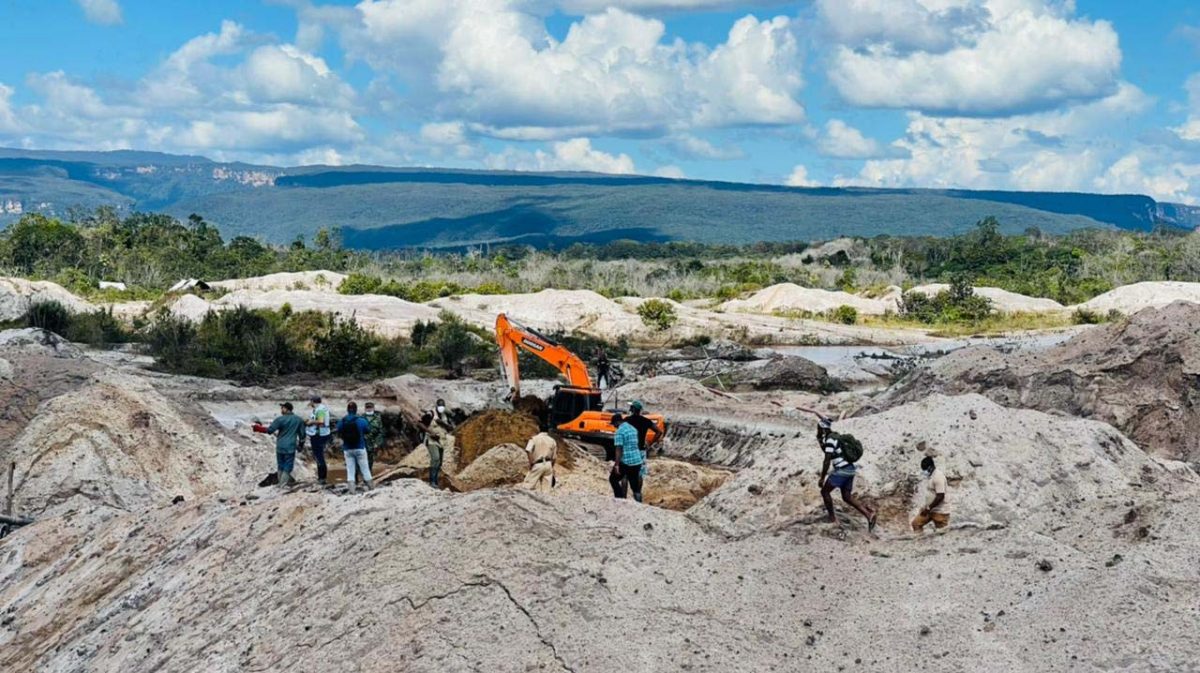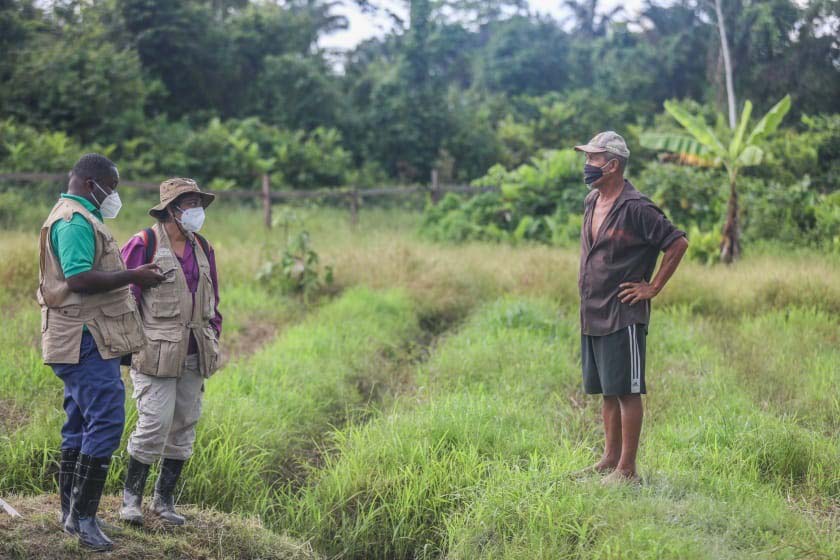A Detailed Damage Sector Analysis (DDSA) organised by the Caribbean Disaster Emergency Management Agency (CDEMA) is underway with teams active in all flood-affected regions.
The assessment which commenced yesterday is being coordinated by the local Civil Defence Commission (CDC) and is expected to be completed in one month’s time. Stabroek News understands that the field visits are expected to conclude in five days.
Throughout yesterday, teams met with regional bodies to have an understanding of the situation on the ground before moving to conduct field work.
Thousands across Guyana have been severely affected as a result of flooding after unrelenting rainfall over the past six weeks.
The flooding has been compounded by high tides and overtopping rivers and creeks. This has left many communities across the country inundated, in some cases, covering the rooftops of houses. Since then, many families have been forced to evacuate and are presently being housed in temporary shelters or in the homes of families and friends in areas where shelters are not available.
Some 1,500 persons have been severely affected in Region Two, 600 in Region Three, 2,800 in Region Six, and over 1,000 in both regions Nine and Ten, CDC’s Director General Lieutenant Colonel Kester Craig said recently.
In Region Seven, hundreds of farms and mining areas have been destroyed as a result of the flooding, which many say is the worst they have ever experienced.
Following the declaration of the flooding as a national disaster by President Irfaan Ali, the CDC requested assistance from CDEMA.
A statement from the CDC yesterday said that the teams will be conducting assessments and analysis in health, water and sanitation, infrastructure and housing, agriculture, social services, shelter, and mining.
“The DDSA will see respective teams going into Guyana’s most affected regions, which are Regions Two, Five, Six, Seven and Ten. The teams will spend a number of days in each region meeting with necessary stakeholders and gathering data for analysis. Each …team will include specialists for each of the sectors being assessed,” the CDC explained.
The assessment, the CDC added, will include analysis of the sectors to determine the extent of the damage that has occurred, and an analysis of the estimated cost of recovery. It will also look at how the recovery estimate can lead to additional support for Guyana in the rebuilding and long-term recovery.
One team will visit regions 5 and 6. They are expected to begin their assessment in Region 5 and will visit Fort Wellington, Woodley Park, Bath, Rosignol, Ithaca and Blairmont.
As of yesterday, two teams have been assessing the situation in Region Seven, with one team surveying the Lower and Middle Cuyuni-Mazaruni and the other team assessing the Upper Cuyuni-Mazaruni.
In Region Seven, the Upper Cuyuni-Mazaruni team was scheduled to visit Imbamadai/Omenike and Kambaru, while the Lower Cuyuni-Mazaruni team was expected to visit Bartica, Agatash, and Dagg Point.
In Region Ten, the team was scheduled to begin their assessment with visits to Block 42, Amelia’s Ward, Rainbow City, Silvertown, and Lower Kara Kara.
While in Region Two, the team was scheduled to visit the communities of Anna Regina, Devonshire Castle, Bounty Hall, Queenstown, Perseverance, Suddie and David James Scheme.
Meanwhile, Executive Director of CDEMA, Elizabeth Riley, during a briefing on Tuesday night commended the quick response from the different agencies which allowed for the team to be constituted in a short time.
“This is a true representation of the spirit and practice of our regional response mechanism,” Riley commented.
Riley also commended the work that the CDC has been doing thus far in addressing the flooding, which has been ongoing since last month due to unusually heavy rainfall, CDC said in their statement yesterday.
“It is very important for us to understand what is happening in each administrative region but we cannot get this done without collaboration and coordination, so we are very grateful for the support from the regional and international organisations,” Craig said during the briefing session.
The teams comprise members and representatives from United Nations Development Programme (UNDP), United Nations Children’s Fund (UNICEF), Food and Agriculture Organization (FAO), Pan American Health Organisation (PAHO), United Nations Population Fund (UNFPA), United Nations High Commissioner for Refugees (UNHCR), United Nations Disaster Assessment and Coordination (UNDAC), and the International Organisation for Migration (IOM).
A number of Caribbean regional agencies are also represented on the team, including the Caribbean Public Health Agency (CARPHA), and the Caribbean Agricultural Research & Development Institute (CARDI), as well as local government agencies.








